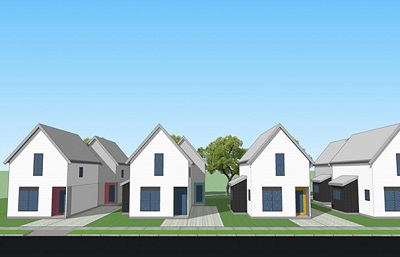 Wednesday, April 24, 2024
Wednesday, April 24, 2024  Wednesday, April 24, 2024
Wednesday, April 24, 2024 
It’s the first rule of city planning: You don’t mess with people’s neighbourhoods without a fight. Minneapolis got a crash course in that reality last year when, in the face of rapid population growth, ballooning housing costs and plummeting vacancy rates, its city council voted for a new planning framework called “Minneapolis 2040.” The new development bible aims to eliminate the single-family zoning that covers much of the city, and open everywhere to at least modest development— up to three dwelling units on even the most restrictively zoned residential lots.
Opinions were divided, to say the least. Activist group Minneapolis for Everyone passed out Don’t Bulldoze Our Neighborhoods lawn signs, and warned on their website that the plan will “benefit developers at the expense of…families, older people and the disabled.”
On the other side of things, Neighbors for More Neighbors, a pro-density group, distributed business cards reading “Uh oh! Your homeowner privilege is showing”—a reference to older homeowners, presumably comfortably ensconced in established neighbourhoods and not too enthusiastic about any change in that whatever-you-want-it-to- mean chimera, “neighbourhood character.”
Overall, though, housing advocates and anti-poverty advocates have celebrated the idea of building what planners call the “missing middle”—duplexes, triplexes, small apartment buildings—on streets dominated for decades by detached homes. They hope it will reduce inequality and lead to more housing availability.
It wasn’t that long ago that protecting neighbourhood character from development was a progressive bona fide. But the past few years have seen a shift from the conservationist old guard—the generation that helped fight off inner-city freeways and destructive urban-renewal schemes—to a more permissive group of municipal activists. The so-called YIMBYs (for Yes in My Backyard) have especially gained traction in ultra-expensive cities in desperate need of both subsidized housing, and plain old market housing accessible to non-millionaires. So it’s not surprising that loosening up restrictive zoning that stifles new housing is a key plank in these groups’ activism.
Watch the video and learn more about the benefits of joining Construction Links Network – the peer-to-peer network sharing platform for the construction, building and design community.
Ideal for YOUR Press Releases | Project Updates | New Appointments | Awards & Milestones | Company News | New Products/Services | Brochures | Videos | Infographics | Blog Sharing | Events and More